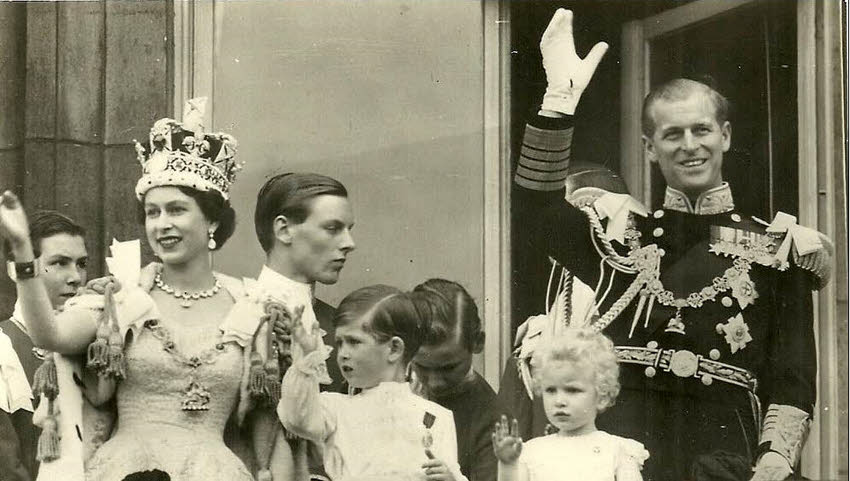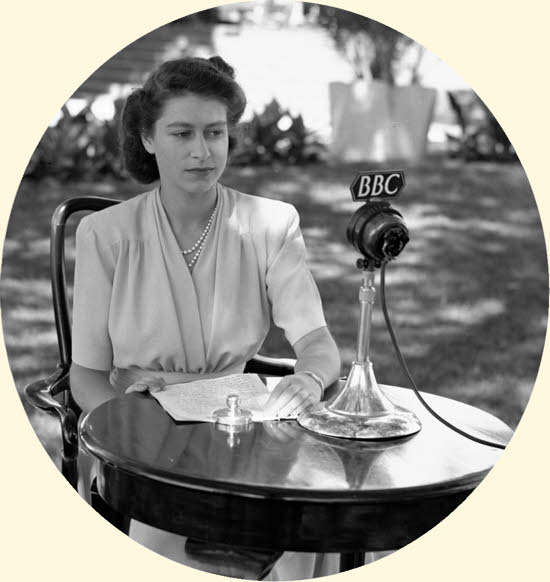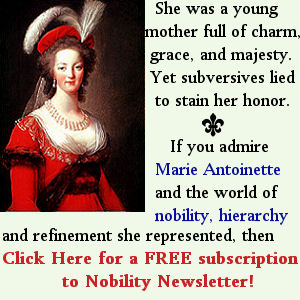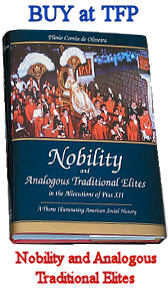By Plinio Corrêa de Oliveira
It is time for Catolicismo to say something about the criticisms that Lord Altrincham and part of the British press have made against Queen Elizabeth. The very nature of this subject requires that our comments be made in the Ambiances, Customs and Civilizations section, since such criticisms targeting the young Sovereign fall squarely within the scope of this section.
To be brief, Lord Altrincham and his henchmen attacked Elizabeth II because they thought that her presentation, manner and the aristocratic tone of the English court are incompatible with our egalitarian century’s idea of a Queen.
What should we think of this?
Lord Altrincham’s criticism is astonishingly superficial and fundamentally insincere. For if our century is so egalitarian that the most beautiful traditions of the monarchic and aristocratic past cannot survive then the monarchy itself no longer has a reason to exist. Essentially, what Altrincham has asked is that the monarchy be turned into a petty-bourgeois institution. He would not want Elizabeth II dressed as Queen of England but as a suburban beauty queen capable of appearing without too much dissonance alongside (Communist leaders) Khrushchev and Bulganin at official ceremonies. If he did not notice this, he was superficial. If he did realize it he was insincere when formulating this criticism as a monarchist, for his mouth spoke of an essentially anti-monarchical egalitarianism. Enough about Altrincham, he does not deserve any more time. Let us delve into the merit of this matter. Is it true that the English monarchic ceremonial is anachronistic and should become plebeian?
Enough about Altrincham, he does not deserve any more time. Let us delve into the merit of this matter. Is it true that the English monarchic ceremonial is anachronistic and should become plebeian?
This question is poorly formulated. Men must not act according to the whims of the time but according to the order that God has placed in creation.
Providence placed in nature beautiful and precious materials with which human ingenuity, rightly moved by a longing for beauty and perfection would produce jewels, velvets, silks and all that serves as ornament to man and to human life.
An order of things (under whatever form of government) in which all this were outlawed as evil would be rejecting precious gifts bestowed for the moral perfection of mankind.
On the other hand, God gave man the possibility of expressing by gestures, rites and protocol the high notion he has of his own nobility or the sublimity of the functions that he is sometimes called upon to exercise in the spiritual or temporal government. Hence, besides luxury, pomp is a natural element in the life of a cultured people.
These decorative resources were meant to embellish tradition, legitimate power, authentic social values, and not to be the privilege of upstarts or nouveaux-riches that show off their opulence (fully unprepared) in nightclubs, casinos and sumptuous hotels. And even less to be locked in museums for having become incompatible with the functional simplicity and grim sternness of a more or less ‘sovietized’ environment.
Thus understood, these decorative elements essentially have an admirable cultural, didactic and practical function of utmost importance for the common good. On a balcony, the Queen, the Duke of Edinburgh and their two sons present themselves to the applause of the crowd. Centuries of taste, finesse, power and wealth patiently prepared these magnificent jewels, this noble attire, this perfect stylization of physiognomic attitudes and expressions.
On a balcony, the Queen, the Duke of Edinburgh and their two sons present themselves to the applause of the crowd. Centuries of taste, finesse, power and wealth patiently prepared these magnificent jewels, this noble attire, this perfect stylization of physiognomic attitudes and expressions.
From the standpoint of bodily comfort it is quite possible that the Queen found it more convenient at this time to be in a robe de chambre and slippers, doing tricot; that the Duke preferred to be in a swimming pool and the children frolicking on a lawn. But they understand that these things are only done in private. It may be fine, for example, for a shepherd to them do before his flock of irrational animals, but not for a head of state that must gain the respect on an intelligent people. Animals are led with a staff and allowed to graze. Men need convictions, principles, and consequently symbols that express all this.
Thus, when the Royal Family appears on the balcony it symbolizes the doctrine of the divine origin of power, the greatness of its nation, the value of the intelligence and taste of English culture. The crowds applaud. People come from all over the world to see this manifestation of greatness in England. And at the end everyone disperses saying, “what a great institution, what a great culture, what a great country!”
In our second picture, here is Elizabeth in ordinary attire. Imagine that from now on she only presented herself to the people like this. Who would come to see her? And seeing her, who would think of the glory of England?
Almost every one of the few who came to see her would think: what a nice young lady. With the Queen’s high finesse and very authentic distinction veiled by the banality of modern dress, many would not notice it. And since the streets, squares, cinemas, buses and subways are full of nice girls, things would end right there.
How admirable, legitimate and profound is the power of symbols! Only would deny it someone without the intelligence to understand it or someone who sought to destroy the high realities these symbols express. Woe to the country in which (whatever its form of government) public opinion allows itself to be led by vulgar demagogues that enshrine triviality and only like what is banal, inexpressive and common.
Ambiences, Customs & Civilizations. No. 82 – October 1957






